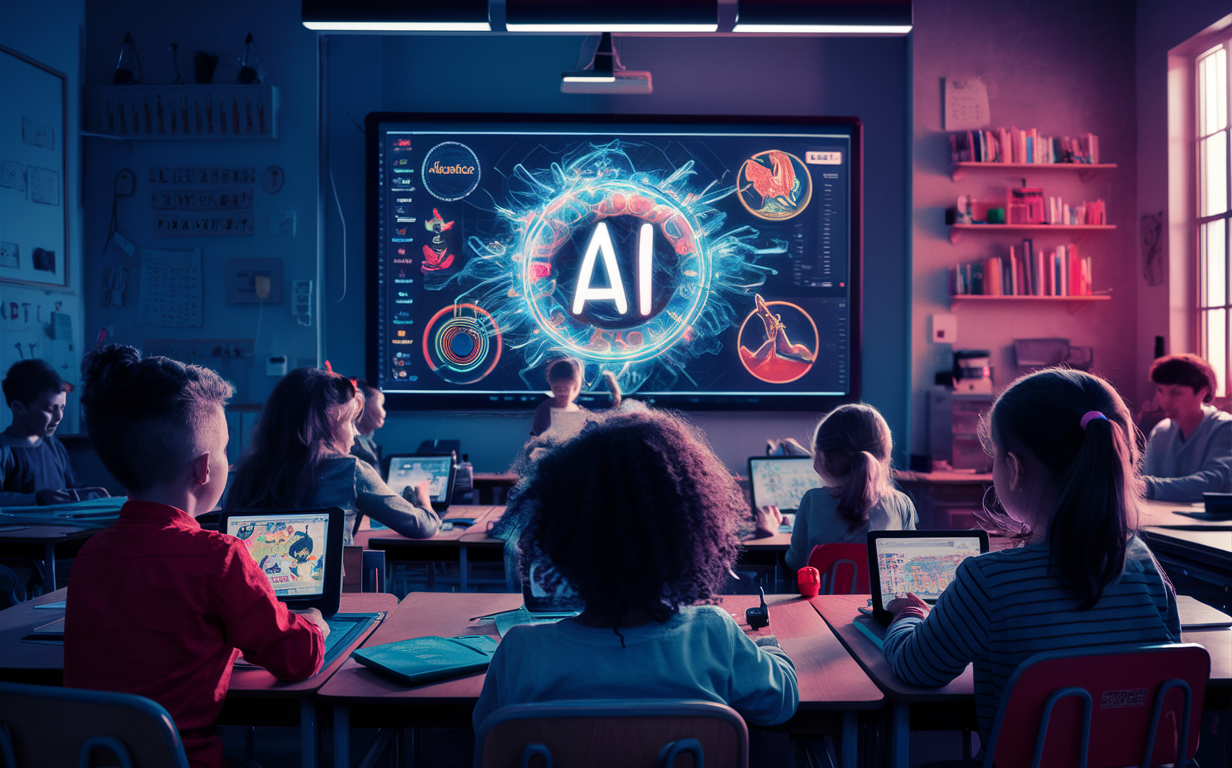In recent years, artificial intelligence (AI) has transformed multiple industries, and education is no exception. Schools worldwide are exploring how can AI help teachers to streamline their workload, enhance student learning, and improve classroom management. By thoughtfully using AI in the classroom, educators can unlock new opportunities that benefit both teachers and students alike.
Understanding AI in the Classroom
AI in the classroom refers to the use of artificial intelligence technologies to support educational processes. These tools range from adaptive learning platforms that personalize content to AI-powered grading systems and virtual assistants. Integrating AI doesn’t mean replacing teachers but empowering them with technology to focus more on teaching and less on administrative tasks.
Ways AI Supports Teachers
- Automating Administrative Tasks
One of the biggest challenges teachers face is administrative overload—grading assignments, managing attendance, and preparing lesson plans. AI can automate many of these tasks. For example, AI grading tools can quickly and accurately assess multiple-choice and even some written answers, freeing teachers to spend time on personalized instruction. - Personalized Learning and Student Support
AI-powered platforms analyze individual student data to identify strengths, weaknesses, and learning styles. Teachers receive insights that help tailor lessons and activities for each student. This using AI in the classroom approach helps teachers differentiate instruction without extra manual effort. - Enhanced Engagement Through Interactive Tools
AI-driven chatbots and virtual tutors can engage students in real-time by answering questions and providing explanations. This support extends learning beyond the classroom and offers teachers an assistant to handle routine queries. - Predictive Analytics for Intervention
By analyzing data trends, AI can predict which students might struggle or fall behind, allowing teachers to intervene early. This proactive approach supports better academic outcomes and reduces dropout rates. - Professional Development and Resources
AI can curate customized professional development plans for teachers by recommending courses, resources, and training based on their needs and teaching styles.
How Schools Can Start Integrating AI
- Pilot AI Tools in Specific Classes
Starting small helps schools evaluate the effectiveness of AI solutions before wide-scale adoption. For instance, piloting an AI grading tool in a math class can help measure time saved and accuracy. - Invest in Teacher Training
Teachers need training to effectively use AI tools. Professional development should include how AI works, its benefits, and ethical considerations. - Collaborate with AI Developers
Schools can partner with educational technology companies to ensure AI tools meet classroom needs and comply with privacy standards. - Focus on Ethical AI Use
Data privacy and bias are key concerns. Schools must ensure AI applications protect student data and provide fair, unbiased support. - Gather Feedback and Adapt
Continuous feedback from teachers and students will help refine AI integration strategies and tools.
Challenges to Consider
- Cost of Implementation
AI tools can be expensive to implement, especially for schools with limited budgets. - Teacher Resistance
Some educators may fear AI replacing their roles or feel overwhelmed by new technology. - Infrastructure Needs
Reliable internet and up-to-date hardware are essential for effective AI use.
Despite these challenges, the benefits of AI in the classroom far outweigh the hurdles when integration is thoughtfully planned.
The Future of Teaching with AI
AI is not about replacing teachers but enhancing their capabilities. With AI handling routine tasks and providing actionable insights, teachers can dedicate more time to creative lesson planning, mentorship, and fostering critical thinking.
As AI technology advances, schools that embrace it responsibly will prepare educators to thrive in an increasingly digital world while improving student outcomes.
For schools ready to take the next step, integrating AI in the classroom is a promising path forward—one that benefits teachers, students, and the entire educational ecosystem.
For schools and educators looking to embrace the future of education through AI, Wordrush is here to provide insights, tools, and resources to make using AI in the classroom seamless and effective.


